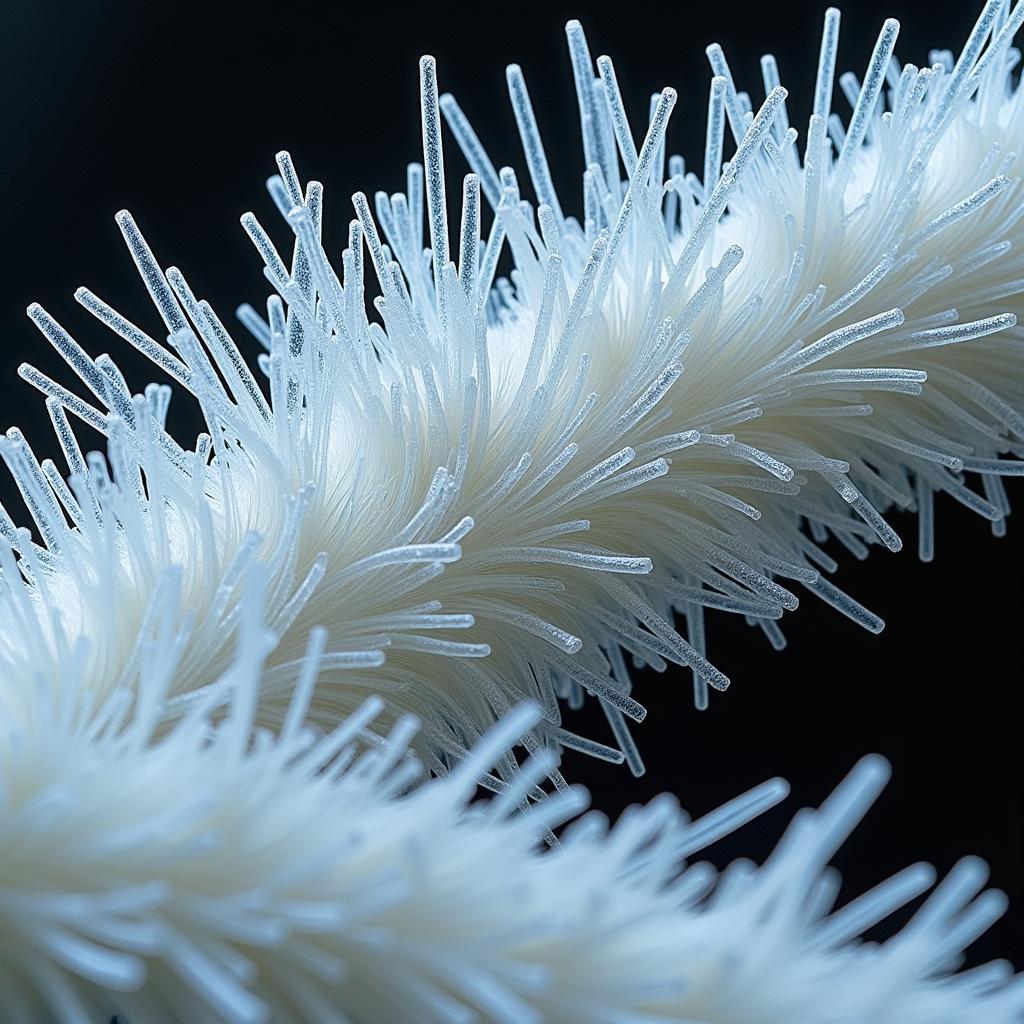Polar bear fur appears white, but what color is a polar bear skin? Surprisingly, it’s not white! This seemingly simple question opens a fascinating window into the biology and adaptation of these majestic arctic creatures. This article delves into the real color of a polar bear’s skin, exploring the science behind their unique camouflage and how it helps them survive in one of the harshest environments on Earth.
what color is the polar bears skin
Unveiling the Truth: Polar Bear Skin Color
Contrary to popular belief, a polar bear’s skin is actually black. This might seem counterintuitive, given their snowy white appearance. The black skin absorbs sunlight, helping them stay warm in frigid temperatures. This dark pigmentation is especially beneficial in the summer months when they have access to open water and land, maximizing heat absorption.
The Science Behind the White Fur
While their skin is black, their fur appears white due to a combination of factors. Each hair strand is hollow and transparent. These hollow hairs scatter and reflect visible light, giving them their characteristic white appearance, perfect for blending in with the snow and ice. It’s a remarkable example of natural camouflage.
Why Hollow Hairs?
The hollow structure of the fur doesn’t just contribute to their white appearance. It also provides exceptional insulation, trapping air and keeping them warm in sub-zero temperatures. This adaptation is crucial for their survival in the Arctic.
 Polar Bear Fur Structure: Hollow Hairs and Black Skin
Polar Bear Fur Structure: Hollow Hairs and Black Skin
Why Black Skin Matters
The black skin beneath the fur plays a vital role in thermoregulation. It absorbs sunlight, converting it into heat, which is then trapped by the insulating layer of fur. This natural heating system helps them maintain a stable body temperature even in extreme cold.
More Than Just Camouflage
The black skin isn’t just about staying warm; it’s also thought to aid in vitamin D production. Although the exact mechanism isn’t fully understood, it’s believed that the black skin absorbs UV rays, which are then converted to vitamin D. This is a vital nutrient for bone health and overall well-being.
Variations in Fur Color
While generally white, a polar bear’s fur can sometimes appear yellowish or even greenish. This can be due to factors such as diet, environmental conditions, and the age of the bear. For instance, algae growing on the fur in warmer months can give it a greenish tinge.
what color skin does a polar bear have
Do Polar Bears Change Color?
Polar bears don’t actively change color like chameleons. However, their fur can appear different shades depending on the lighting and the surrounding environment.
 Polar Bear in Different Lighting Conditions
Polar Bear in Different Lighting Conditions
Conclusion: A Masterpiece of Adaptation
The seemingly simple question, “what color is a polar bear skin?” reveals the intricate and fascinating adaptations of these incredible animals. Their black skin and hollow white fur are a testament to the power of natural selection, allowing them to thrive in one of the most challenging environments on our planet. Understanding these adaptations is crucial for appreciating the delicate balance of the Arctic ecosystem and the importance of conservation efforts.
what causes different fur colors answer key
FAQ
- What is the actual color of a polar bear’s skin? Black.
- Why does their fur look white? Because of the hollow, transparent hairs that scatter and reflect light.
- How does their black skin help them survive? It absorbs sunlight for warmth and possibly vitamin D production.
- Can polar bears change color? No, but their fur can appear different shades depending on lighting and environment.
- Why are polar bear adaptations important to understand? It helps us appreciate the Arctic ecosystem and the importance of conservation.
- What is the purpose of the hollow hairs in a polar bear’s fur? Insulation and contributing to the white appearance.
- What can cause a polar bear’s fur to look yellowish or greenish? Diet, environmental factors, and algae growth.
Scenarios
- Scenario 1: A child asks why polar bears are white. Explain the black skin and hollow hair concept.
- Scenario 2: Someone wonders how polar bears stay warm. Highlight the role of black skin absorbing sunlight and the insulating fur.
- Scenario 3: Discuss the misconception of white skin and the surprise of discovering it’s black.
Related Questions and Articles
- How do polar bears hunt?
- What do polar bears eat?
- The impact of climate change on polar bear populations.
Call to Action
For any assistance, contact us at Phone: 0373298888, Email: [email protected], or visit us at 86 Cau Giay, Hanoi. We have a 24/7 customer service team.

